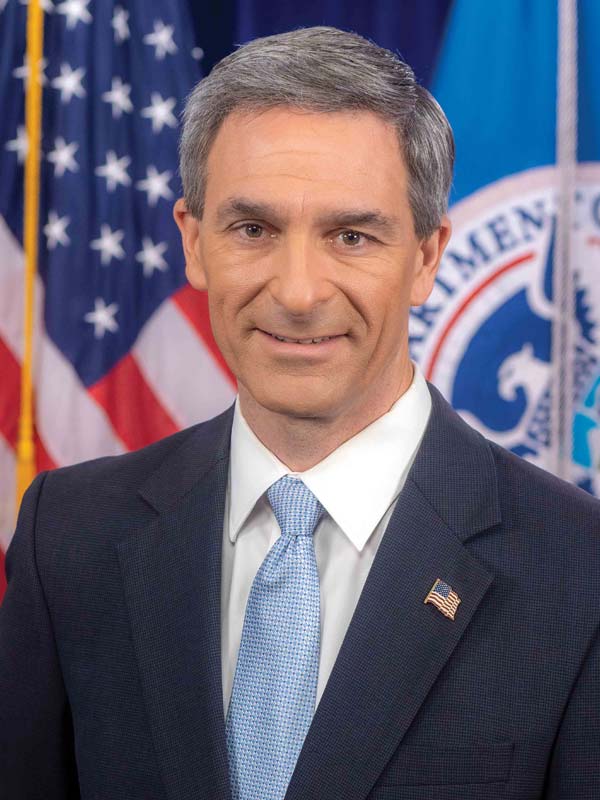IN 2014, Nix, a senior person in Cambridge Analytica, the defiled and defunct UK-based firm that was accused of manipulating elections in the US (2016) and the UK (Brexit), wanted to test the accuracy of its voters’ database. “Do we have their phone numbers?” Nix asked. Yes, he was told. He reached for the speakerphone, and dialed one of the numbers from the list of American voters. A woman said “hello” on the other side. “Hello madam, I am terribly sorry to bother you, but I am calling from the University of Cambridge.”
The woman confirmed that her name was Jenny, and then Nix asked questions whose answers were already in her database. “What is your opinion of the television show, Game of Thrones?” Jenny ranted about it, just as she had on social media posts. “Did you vote for Mitt Romney in the last election?” The reply was a yes, as it should be. Nix asked if her kids went to a specific school, and Jenny confirmed it. Everyone in the room had huge grins on their face. Their database on hundreds of millions of American voters was a hit.

During the Donald Trump presidential campaign in 2016, the two key and crucial messages he successfully used were “Drain the Swamp”, and “Build the Wall”. Both were aimed against immigrants, and fuelled and stoked the fires of anger and discontent among white Americans. Ironically, sociologists and anthropologists employed by Cambridge Analytica picked up these strands of popular social thoughts during their freewheeling discussions with normal people in various US states in 2014. They were later incorporated into the campaign messages, and over-used by Trump.
Contrary to popular belief, the process to rig elections and target voters starts 2-3 years before the scheduled dates. It starts with extensive focused group discussions and conversations without an agenda and structured questionnaires with the normal people across several regions and constituencies. For example, in the US, CA began its work in 2014, more than two years before the Presidential election in 2016
These two examples prove the mastery of the firm in the art and science of electoral manipulations. At a micro level, it understood the hearts and minds of the voters—what they liked, who they voted for, what are their views on political and social issues, how much did they spend, and so on. At the macro level, they understood the small and large issues that irked, troubled, angered, and frustrated several sections of the society. The immigration issue was raked up by Trump because Cambridge Analytica (CA) found that it was a sore subject with several smaller and nuanced voters’ bases.
Mindf*ck, a book written by Christopher Wylie, the former head of research of CA, and later the whistle blower, exposes the firm’s shenanigans. It reveals the modus operandi and the nitty-gritty of how to rig elections and influence voters. In the bargain, Wylie explodes a lot of myths and semi-truths that have emerged in the past few years. The book, in fact, needs to be the starting point for anyone who wishes to understand how social media and electoral campaign strategies are deeply enmeshed with each other.
Contrary to popular belief, the process to rig elections and target voters starts 2-3 years before the scheduled dates. It starts with extensive focused group discussions and conversations without an agenda and structured questionnaires with the normal people across several regions and constituencies. For example, in the US, CA began its work in 2014, more than two years before the Presidential election in 2016. As Wylie says, it started in the state of Virginia. It began with qualitative research— “unstructured, open-ended conversations with local people.”

It was sociologists and anthropologists who conducted the discussions. They were experts but without any fixed questions and potential answers. No one on the team was an American; for them, Virginia “was as foreign… as Ghana”. “We couldn’t generate questions until they had introduced themselves to us, in their own way, and in their own environment. Once we had a better feel for what Virginians cared about, and how they approached things, we could then structure specific questions for quantitative research.” The fact is that culture and politics are terribly intertwined.
What is insidious about this process is that it naturally and illogically triggers a effect in which alternative and contradictory viewpoints, which may be true, paradoxically strengthen the audience’s resolve to their original beliefs, which may be false. This is because the former tend to be perceived as a threat to the people’s personal freedoms
ONCE the mix of qualitative and quantitative data was combined and run through specially designed algorithms that the research team could divide and sub-divide American voters into personality traits, and sub-identities. For example, at the individual levels, CA used the typical five-factor model of personality—extraversion (assertive and sociable), agreeableness (cooperative and polite), conscientious (focused and orderly), neuroticism (prone to negative emotions), and openness to experience. Although each individual is different, they have several common traits, and can be captured as groups.
At the identities level, Wylie observed that most pollsters and experts tend to take the easy way out, and categorise voters in broad-brush sections—white Anglo-Saxon republicans or democrats; African-Americans, Latinos, etc. This is a mistake that we regularly make in India—casually divide the voters along castes, religions, ethnicity, and communities. During the research, CA figured out that these broad recognitions had broken down; identities were psychological and emotively described by the individuals in different forms. In India, for instance, most Muslims, Yadavs, and Dalits don’t vote like a herd, as they used to even a decade ago.
Such sub-identities either already exist, or can be shaped and influenced through targeted messaging over a longer time. Media, including social media, can help in such endeavours. For example, when Wylie was in the US, he was addicted to Fox News TV channel. He noticed how the network conditioned the “people’s sense of identity into something that could be weaponised”. With its hyperbolic narratives on a daily basis, Fox News fuelled anger, which disrupted the people’s ability to “seek, rationalise, and weigh information”. These lead to several cognitive biases.
One of them is affect heuristic, where people use mental shortcuts that are significantly influenced by their emotions. This is the reason why we say things in a fit of anger that we later regret—the fact is that we think differently in the heat of the moment. So, when ideas and opinions are constantly bombarded to anger people, based on what they really think, it leads to identity-motivated reasoning over time. This implies that the merit of the content, or its truthfulness or falsehoods, doesn’t matter. People accept or reject information on the basis of how it builds or threatens their group identity.
“I began to understand that Fox works because it grafts an identity on to the minds of the viewers, who then begin to interpret a debate about ideas as an attack on their identity (or in support of it),” writes Wylie. This is true of views on social media, websites like Beit Bart News, which was the main weapon in Trump’s hands, as also other disseminators of news. So, the new technological means of communication can push us to accept new identities, or finesse existing ones in a manner that is hidden from us.

WHAT is insidious about this process is that it naturally and illogically triggers a effect in which alternative and contradictory viewpoints, which may be true, paradoxically strengthen the audience’s resolve to their original beliefs, which may be false. This is because the former tend to be perceived as a threat to the people’s personal freedoms. Have you noticed that the more critics talk against Prime Minister Narendra Modi, the more his bhakts, loyalists, and supporters believe him! Even if what Modi says is wrong, convoluted, and unjustified—and blatantly false.
Another important factor is the fallacy among most people to think of the world as a zero-sum game, with logical (though may be completely out of place) winners and losers. The flawed logic makes people believe is that if certain groups get more attention, it is always at the expense of the others. Remember how this plays out in India between the Hindus and Muslims. The former believe that the benefits given to the Muslims results in their loss. Clearly, in such situations, the majority perceives the minorities as threats.
Given such cognitive and psychological biases that are present in every individual to some extent, the creation and enhancement of sub-identities results in nuanced, layered, and varied labellings of voter constituencies. For example, in the US, Wylie realised that the broad descriptions as “White voters, Latino voters, women voters, Suburban voters, etc”, which were frequently discussed as uni-dimensional and monolithic groups” did not reflect what people thought about themselves. In effect, such labelling by the pollsters alienated the certain sections of the voters.
This initial psychological profiling at the individual and group’s levels was combined with extensive data from the social media. Studies and papers published in psychology journals proved that the “patterns of social media user’s likes, status updates, groups, follows, and clicks all serve as discrete clues that could accurately reveal a person’s personality profile when compiled together”. In fact, Facebook (FB) was at the cutting-edge of such research and, in 2012, it filed for a US patent for “Determining user personality characteristics from social net-working system communications and characteristics”.
What was masterly about FB that it allowed researchers to take its users’ data through apps that were created by them. FB wanted re-search on its platform since the more it can learn about its users, the more it can monetise the data. Even better was the fact that the social media network allowed the apps not only to receive the data of the person who downloaded it, but also those of her friends. On an average, a user has 150-300 friends, which implied that if a few million downloaded an app, one could collect 300 million profiles. The only challenge: the app-maker had to pay the users to download it, generally one or two dollar per user.
A 2015 study found that computer models could predict a person’s behaviour better than her colleague if they had access to ten FB likes. With 150 likes, they could do so better than the person’s family members. With 300 likes, “the model knew the person better than their own spouse”. Since FB data is holistic and comprehensive, it was more reflective of who the person was. In this sense, the model could possibly know an individual better that “they even know themselves”. This presented significant opportunities.
The triumph of Trump
IF there is one question that still grapples and conflicts the minds of people across the globe, especially in the US, it is this one. Why did such a huge proportion of the American electorate voted for Donald Trump despise his racist remarks, bragging about sexual offences against women, and repeated falsehoods?
The answer lies in an earlier election campaign designed by Cambridge Analytica—the race to become the Governor of the state of Virginia in end-2013. As Christopher Wylie, the CA whistleblower reveals in his book, it was a classic case of an openly offensive individual getting the loyal support of the voters. When Wylie and his team arrived in Virginia, they noticed that people in focus group discussions were concerned about the Republican candidate for Governor, Ken Cuccinelli. A “super-right-wing type”, the candidate advocated policies to roll back gay rights and fight against environmental protection. Even Cuccinelli’s supporters were worried about his extreme views—it is fine to be against gays, but why ban all non-procreative sex, as he demanded? Although they were Republicans, they were cagey to vote for him. In essence, the discussions revealed that the would-be voters were “put off by Cuccinelli’s obsession with blow-jobs”, and his unpredictability.

So, CA carried out an experiment to test “to move the needle of opinion” on the candidate. What if his campaign messages accepted and acknowledged his weirdness? The message that was sent out was: “You might not agree, but at least you know where I stand”. In a sense, he was crazy for sure, but it was a “predictable and rendered kind of crazy”. The strategy worked successfully. In the voters’ mind, Cuccinelli came to be recognised “the devil you know”. As Wylie concludes, “It turns out that Republicans can accept a batshit insane candidate, so long as it is consistent insanity. This finding later informed almost everything that Cambridge Analytica worked on (including the Trump’s election campaign). From there, of course, it is a short jump to having a candidate brag that he could stand in the middle of Fifth Avenue and shoot somebody without losing support.”
CA went a step further, and got data about the American individuals from other sources—marketers, telecom companies, food chains, online retailers, census data, government data, information from healthcare, in essence, whatever was available. This was fed into the computer models after collating it with the individuals and identity groups. Thus, the firm sat on a huge mountain of data, which could lead to better representation, and profiling. Some of the information was openly available, and some was purchased. No stone was left unturned in this search for knowledge about voters.
Thus, the data strategy was simple. The researchers’ apps allowed them to collect personality traits of the FB users, as they had to an-swer several personality questions in lieu of a minor payment. Sometime, if the quality demands were higher, the payment could be as high as $50-100 per user. The FB and other data of the users and her friends allowed the researchers to create psychological profiles, as well as categorise them under social identity groups. Now that they understood both the individuals and groups, messages could be designed to nudge, push, and cajole them.
The science of messaging, before and during election campaigns, dealt with morale degradation of the identity groups. The idea was to break down the psychological resilience factors in individuals and groups. As Wylie writes, “Programs are designed to create unrealistic perceptions in the targets that result in confusion and damage self-efficacy. Targets are encouraged to begin catastrophising about minor or imagined events, and counter-narratives attempt to remove meaning, creating an impression of confusing or senseless events.” They foster mistrust, reduce communication with the “others”, and makes people loyal to the existing hierarchies.
Although, CA had data for hundreds of millions of Americans, it realised that the campaign message had to influence and impact only a minority of them, not more than 5 per cent. These voters were largely present in the swing states that could influence the election results, and comprised those who were more emotionally charged, and thus could be pushed and pulled in different directions, than the others. CA focused on Florida, Michigan, Wisconsin, and Minnesota, among others. Notably, all these states played a crucial role in the Trump’s victory, where the margins were less than 2 per cent.

AN analysis by the Washington Post showed that Trump won convincingly in 26 states, and garnered 227 electoral votes. “Most of these states usually vote Republican, except Iowa and Ohio, which voted for (Barack) Obama in 2008 and 2012,” the paper observed. According to the same report, “(Hillary) Clinton won decisively in 18 states and (Washington) DC, netting her 222 electoral votes. Many of these states are traditional Democratic strongholds that are densely populated, and along the coasts.”
What proved to be the game-changer were the six states, which included the ones where CA focused. The four states—Florida, Michigan, Wisconsin, and Pennsylvania—that Trump won in close fights “were all won by Obama in 2012”. According to the Post, Pennsylvania and Michigan had not voted for a Republican president since 1988, and Wisconsin had not gone Republican since 1984. It was in these states that racial tensions, mistrusts, and confusion over immigrants, largely fuelled by CA, made a difference.
More importantly, the electoral strategy wasn’t just about forcing the fence sitters, and those who were emotionally weak, to vote for a certain candidate. Obviously, CA aimed to push and pull Republican non-voters and reluctant ones to go to the polling booths. But, at the same time, the firm used the campaign to prevent positive Democrat voters to stay at home. This was especially targeted at the African-Americans and Latinos, who have generally voted for Democrats. The best thing is that these twin objectives can be achieved by merely adding fuel and fire to the existing divides in the society.
Alam Srinivas is a business journalist with almost four decades of experience and has written for the Times of India, bbc.com, India Today, Outlook, and San Jose Mercury News. He has written Storms in the Sea Wind, IPL and Inside Story, Women of Vision (Nine Business Leaders in Conversation with Alam Srinivas),Cricket Czars: Two Men Who Changed the Gentleman's Game, The Indian Consumer: One Billion Myths, One Billion Realities . He can be reached at editor@gfilesindia.com



























































